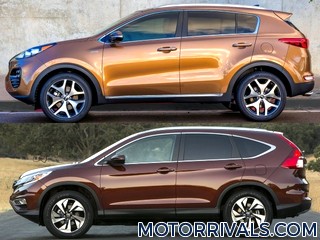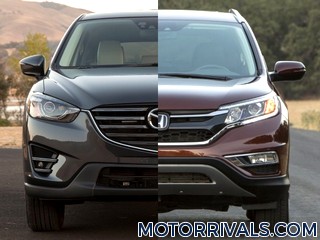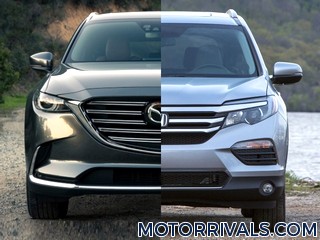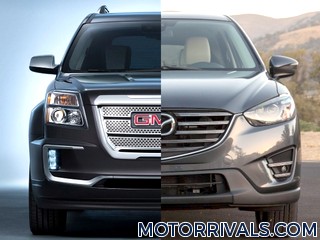2018 Toyota C-HR vs 2017 Mazda CX-3
Toyota Press Release Highlights
Powertrain
The C-HR's engine, a punchy 2.0-liter four-cylinder producing 144 horsepower and 140 pound-feet of torque, sends all power to the front wheels via continuously variable transmission (CVT). The engine employs many of Toyota's latest generation of technologies, including Variable Valve Timing (VVT) and Valvematic, both of which have received extensive optimization to enhance fuel economy and smooth operation. Valvematic offers a broader range of continuously variable valve timing (lift and phasing) to provide optimal intake valve (not on exhaust side) operation relative to engine demands. The all-new CVT received much attention by engineers, and utilizes redesigned pulleys to enhance acceleration and fuel economy; a new belt structure to reduce cabin noise; and, a world's-first coaxial two-port oil pump system that allows for continuous oil pressure modifications in various driving conditions. A Preload Differential helps to distribute torque between the left and right wheels during low-speed operation to make for easier, composed driving. Of course, drivers and passengers will appreciate the powertrain's fuel efficiency, impressive smoothness, and quiet operation, but they'll love Sport mode and the simulated 7-speed Sequential Shiftmatic. Engaging the Sport mode via the MID increases the responsiveness of the throttle, quickens the CVT's automatic artificial "step-up" shifts, and maintains high engine speed to enhance acceleration. The EPS' feedback is weightier for a more confidence-inspiring feel.Chassis
The Toyota C-HR's unique character demonstrates the flexibility that the TNGA (Toyota New Global Architecture) gives to vehicle developers in the three key areas of design, powertrain and dynamics, enabling them to deliver a new and fresh take on the increasingly commoditized crossover segment. The newly developed MacPherson strut front suspension with SACHS dampers has angled strut bearings and a large diameter stabilizer bar to help the C-HR's front end respond quickly and precisely at initial corner turn-in. And at the rear, an all-new double-wishbone suspension utilizes SACHS shock absorbers with urethane upper supports - a first for Toyota. Feeling connected to the road is characteristic of a sporty drive, and the C-HR delivers with its column-type Electronic Power Steering (EPS) system. As is the case with other EPS systems, a tilt of the steering wheel will return light feedback at low speeds, and at higher speeds, drivers will notice stronger feedback for increased confidence while behind the wheel. The Toyota C-HR's steering system's feel, however, relies on a highly rigid rack-and-pinion steering gearbox that is installed directly to the front suspension.Technology
The slightly angled dashboard and amenity controls allows for the driver to have a clear view of the road ahead and intuitive access to instrumentation - a nod to the C-HR's sports car influence. The 7-inch audio display is positioned centrally atop the dash, rather than in it, so as to help reduce a driver's eye movements. An informative twin-ring gauge cluster resides behind the leather-wrapped multi-function steering wheel. The wheel, with its slender profile, small diameter, and compact center pad, is reminiscent of a sports car's easy-to-grip helm. The satin-plated shift knob exudes a high-quality feeling, and once in-hand, has a solid shift movement. A bright 4.2-inch color Multi-Information Display sits between the twin-ring cluster. Key XLE standard features include a premium leather steering wheel; power fold and heated mirrors; auto-dimming rearview mirror with backup camera; electric parking brake; and dual-zone climate control. The XLE Premium builds upon the XLE's amenities and adds Blind Spot Monitor and Rear Cross Traffic Alert; heated front seats; power lumbar driver's seat; auto fold, heated side mirrors with puddle lamps that project "Toyota C-HR"; fog lamps; and Smart Key with Push Button Start. Both grades are equipped with a 7-inch touchscreen display having AM/FM/HD Radio™, Aha™app, USB port and AUX jack, Bluetooth®, and Voice Recognition with voice training.Safety
No matter its grade, the Toyota C-HR comes equipped with standard Toyota Safety Sense P™ (TSS-P). This multi-feature advanced active safety suite bundles cutting-edge active safety technologies including Pre-Collision System with Pedestrian Detection function (PCS w/PD) featuring forward collision warning and Automatic Emergency Braking, Lane Departure Alert with Steering Assist function (LDA w/SA), Automatic High Beams (AHB), and Full-Speed Dynamic Radar Cruise Control (DRCC). The Toyota C-HR is the only competitor in the segment to offer standard Full-Speed DRCC. Complementing TSS-P are 10 standard airbags, standard Hill-Start Assist Control (HAC) and rear backup camera, as well as available Blind Spot Monitor with Rear Cross Traffic Alert, which are only available on the XLE Premium grade.Mazda Press Release Highlights
The powertrain for North America is the SKYACTIV-G 2.0-liter gasoline engine, which along with Mazda’s new-generation AWD system delivers powerful and linear driving performance and outstanding environmental performance. To enhance the customer’s driving pleasure, the model also offers a wide range of Mazda’s latest technologies, including the Mazda Connect infotainment system and i-ACTIVSENSE advanced safety features.
Technology
- Information the driver requires and the devices for controlling its display are optimally positioned for safety. This includes the Active Driving Display, seven-inch center display and commander control.
- Mazda Connect is an in-car infotainment system that makes it safer and easier to take advantage of functions such as internet connectivity and communications, even when on the move. It provides great convenience by providing services that require Bluetooth connectivity, such as hands-free phone operation, reception of short text messages, and internet radio including Aha by HARMAN.
Powertrain
- For North America, the CX-3 will use the SKYACTIV-G 2.0 gasoline engine which delivers linear, powerful driving performance and excellent real-world fuel economy.
- The CX-3 features an automatic transmission as standard equipment on all trim levels. The SKYACTIV-DRIVE six-speed automatic transmission achieves excellent fuel economy, a direct feel similar to that of a manual transmission, and smooth and powerful acceleration.
- The new-generation AWD system employing an active torque control coupling first used on the Mazda CX-5 is available to achieve excellent drivability and vehicle stability. It employs a world’s first* front wheel slip warning detection system, which employs sensor signals to accurately monitor the driver’s intentions and constantly changing driving conditions. In addition, the CX-3 uses a newly developed power take-off and rear differential that is compact and light in weight.
Chassis
- The CX-3 adopts the SKYACTIV-CHASSIS, which delivers reassuring confidence and greatly enhanced levels of comfort thanks to thoroughly revised suspension and steering functions. Fine-tuning of every related component realizes natural response, ease of control and reassuring confidence, even when driving on the highway.
- The chassis employs a lightweight torsion beam rear suspension system that features highly efficient packaging and dampers in the front and rear that optimize friction characteristics to deliver linear handling characteristics and ride comfort with a feeling of high quality.
- The steering system allows light and agile handling in the city, but feels stable on winding country roads and the highway.
- The brake system enables excellent control of vehicle speed at low- to mid-speeds and offers excellent braking performance under high-speed and high G force conditions.
- The CX-3 also adopts Mazda’s SKYACTIV-BODY, which achieves high levels of performance in three seemingly contradictory areas: collision safety, weight reduction, and rigidity. Realizing an even simpler layout of Mazda’s SKYACTIV-BODY architecture, it combines effective positioning of high-tensile steel and optimized cross section shapes to produce a lightweight body that features high rigidity and a sense of positive damping characteristics.
- The usage ratio of high-tensile steel throughout the vehicle body and parts is 63 percent. The usage ratio of ultra-high-tensile steel (780MPa or higher) is 29 percent and four percent of the total is rated 1,180 MPa.
Safety
Based on Mazda Proactive Safety, every effort is dedicated to minimizing the risks that can lead to an accident and maximizing the range of conditions in which the driver can drive safely and confidently. Active safety measures to help identify potential risks early on and reduce any chance of damage or injury include the adoption of Mazda’s i-ACTIVSENSE advanced safety technologies. These enable the driver to enjoy every outing, whether driving on city streets, on the highway, or on winding roads. Passive safety features build on Mazda’s high-strength SKYACTIV-BODY. Dedicated effort went toward providing occupant safety, including the seatbelts and airbag system, and also toward helping protect pedestrians. The result is truly excellent safety performance, and the Mazda CX-3 is fully capable of earning high-level ratings in collision tests around the world.






















